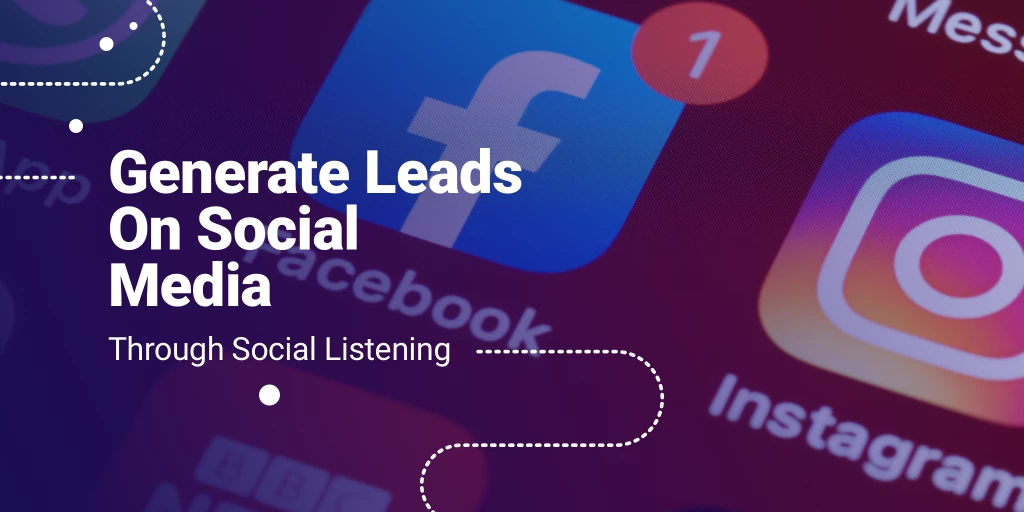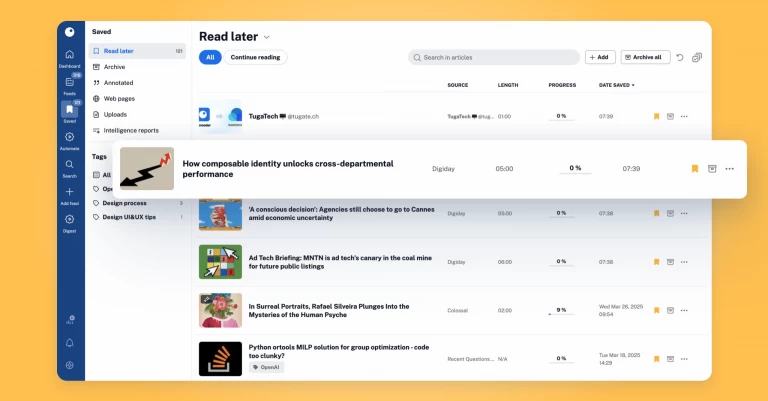Generate Leads On Social Media Through Social Listening

You should be practicing social media listening period. Doesn’t matter whether you’re just a small fish in a large pond, or you’re the market leader by a wide margin.
You can’t afford to ignore what’s being said about your brand and products online otherwise you run the risk of alienating your audience and find yourself in a scandal. Companies are held culpable and accountable by customers, and you’ve likely noticed this in the rise of cancel culture.
To that end, social media listening is essential to guard your brand reputation. Another benefit to using social listening is to better generate sales leads, which you can then convert to real customers. Social listening requires some preparation and you will find it highly flexible, when it comes to moving products off shelves.
Set up your social media listening right
Social media listening is like playing a musical instrument. It’s an art form. Marketers are required to have an ear for it, fine tune their instrument, have the correct sheet music and know how to read it. That is to say – without meticulous research and setup, you’re likely not going to achieve much other than waste everybody’s time.
There are steps you have to take in order to produce the right results. Social media listening is a powerful tool to generate sales leads, because everyone is on social media, but social media is not one thing. Then knowing what to listen for is another skill altogether.
We walk you through the process in three phases.
Find the networks your target audience uses
Monitoring social media doesn’t preclude only staying within the platforms you’re based in. Those should be your starting points. In many cases this is a Twitter account and a Facebook page, but just because you’re on these platforms doesn’t mean that your audience is there. Knowing exactly the generation your audience belongs to determines what social media channels they’ll frequent.
You have millennials flock towards Instagram, though still mainly use Facebook and Twitter. On the other hand, you have the current Gen Z generation – the teenagers of today. This audience is on video-based platforms. YouTube is a strong leader, but TikTok has emerged as the new most popular network currently not to mention Snapchat.
Knowing your audience’s online habitats and habits gives you bigger data sets of value.
Identify your keywords
We’ve touched on where to listen. Now it’s time to explore what to listen to. You can’t perform any good social media listening without the right keywords to guide you. Keywords are the foundations upon which brands build visibility, campaigns and SEO.
Naturally, you’re going to follow your own brand. What are people saying about your brand? What are they saying using your branded hashtags? What are their opinions on your products? You get immediate feedback on your brand health whether you’re being directly involved in customer conversations or not.
However, non-branded keywords make all the difference in surveying the market and how you’re positioned in it. You’re better able to listen into what prospect buyers want in a product like yours but who don’t know of your brand. Through strong keyword research and social media listening you’re in a position to reach this subset of consumers easily.
Look at the competition
Never ignore what your competitors are doing or saying, whether they’re at the top of the food chain or up-and-comers. There are always lessons to be learned from your opposition for sales leads and you can’t learn them without paying attention.
Competitors are often the canary in the mine to see whether certain ideas succeed or flop as you target the same audiences. Yes, each brand has unique strengths that attract specific customers, but competitors in the same niche all share a common audience. Over time you will learn what is an unsuccessful strategy to customer engagement and what produces a favorable response.
Another aspect to competition monitoring, which reveals immediate sales leads, is paying attention to customer complaints. Whether customers directly tag your competitor in your complaint or not, it doesn’t matter. As soon as you spot dissatisfaction and no response from your competitor, it’s time to jump into the conversation and act as problem solver.
Customers highly value support at a timely manner (we touch upon this below as it pertains to your brand’s track record with customer satisfaction) and are likely to switch to you, if you present a solid solution before your competitor. And do it unprompted.
Generate more leads through social media
In a meeting, who would you consider the smartest person in the room?
Hint: It’s not the person who talks the most or talks the loudest. It’s the person who keeps quiet. Keeping your mouth closed opens up your ears to take in valuable information and learn how to best use it to further their goals.
The same principle applies to any marketing activity a company undertakes. Knowing what you’re facing is more than half the battle and every marketer knows customer insights are the bedrock of a successful marketing campaign. Social media listening more than gives you the ammunition to shoot straight and shoot well.
Locate your audience and simply listen. You’ll discover how your customers think, what they say and what they want. Sometimes they will tell you directly by tagging you, so you better listen (and also respond on time, if they mention you online) and take notes.
Improve your customer experience
Customers expect more effort from companies in all matters. Social media implies an even faster response time, because of the immediacy of the platform. If your brand was active ten minutes ago to promote their products, then a representative should be able to reply to a customer complaint or a query. Groove has conducted a detailed research, which shows the importance of speedy, adequate customer support.
Social media monitoring requires you to not just count the numbers of brand mentions and other interactions you’re getting for statistical purposes, but strengthen your relationship with customers. Better customer care and shorter response times translate to happier customers. Happier customers mean more return sales. It’s much easier to generate sales from existing customers than it is to convert first-time buyers.
Before you allocate resources and energy into branching out further, brands ought to secure their home base and improve their value proposition. Through this process you not only improve your communication style and your product (in the long run), you also have satisfied customers talk about your brand in a favorable way online.
Engage with customers and influencers
Tone deaf messaging tarnish your image in front of potential customers, even if you’re targeting the right segment. A mismatch in tone and vernacular results in confused stares from the people you’re trying to attract. Nothing ruins the customer experience quite like a brand, which sounds off and fake.
Social media listening tunes you to the right frequency of your target audience. How do they talk? What do they like? What do they share in terms of content? What are their interests and what are their lives like? These questions form customers’ worldview and values – exactly what you’re trying to tap into in order to sell your products.
It all goes back to the buyer persona you start with. Maybe you know the basics (definitely not discrediting that; it’s a vital first step), but social media listening clears things up on the particulars. Knowing the language also helps you reverse engineer your messaging and content so you’re easy to discover by your target audience.
Influencer marketing has skyrocketed in the past three years, so social media listening supplies you with data on how popular influencers operate.
Discover new market opportunities
Growth stalls at some point. Sometimes it has to do with the nature of the niche you occupy and what your products meet as customer needs. Others the market on a local level has only so much to offer in terms of sales volumes. Brands committed to developing their brand and revenue stream face an age-old question – where do we go from here?
Yes, the answer is again found in social media listening. Monitoring branded keywords as well as non-branded phrases (“what’s a quality low-cost hair dryer brand?”) reveals small pockets of opportunity here and there worth pursuing.
For companies restricted geographically this means a simple adjustment as adding a desired, nearby location to your keyword analysis to see whether there’s a niche market free. Companies with ambitions to broaden their product and service offerings to attract new buyer groups can turn to all the qualifying information and feedback from their target audience. What are new needs to meet? Where can improvements be made? How can a product be targeted to a new buyer persona?
Bend your ear to what your customers are already saying in order to make the first step towards planning your growth strategy.
Run more targeted campaigns
We touched upon this in the first point in our list when we said understanding the language your audience uses makes your brand discoverable. The same applies to your social media campaigns – text means everything! The whole idea behind value propositions is to communicate clearly why a customer should buy from you and do it in the right words.
The right words in this case come from your social media monitoring efforts. From the hashtags for the campaign to how you phrase every sentence, it’s important to use the right keywords. The better targeted your campaign the more social engagement it earns. Greater social engagements is naturally the goal as you then generate more sales leads.
Boost your online reputation
Each process on its own earns sales leads individually. However, we want to highlight the overall cumulative effect when all these strategies and approaches converge – a strong brand reputation. Reputation is the biggest asset any brand has. No matter how many resources you command at your disposal, low public trust and dissatisfaction with your products are almost insurmountable in the long run.
Better customer support, better targeting, better understanding of your target audience and careful expansion to new markets create a healthy narrative surrounding your company. You cultivate a high level of goodwill and trust, which ultimately pays off. Repeat sales will hold and increase over time as you attract new customers through campaigns, then your reputation will snowball into word-of-mouth marketing, which costs you nothing, but is a healthy, organic way to continue your growth trajectory.


